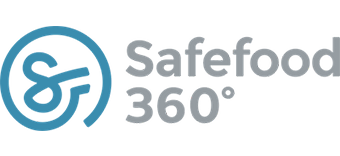HARPC – What you need to know?
The Food Safety Modernization Act was signed into law back on January 4, 2011. It was the largest sweeping reform to the United States Food Laws in over 70 years. Implementation processes and compliance tools will be the largest investment many companies have made and will continue to make for the next several years.
Every food manufacturer will be required to implement the rules for ingredients and/or products made for both human and animals. This rule covers most foreign and domestic food processing facilities, but also applies to other establishments that process, manufacture, pack, or hold food (warehouses, distribution centers, farms). Unless exempted by law, this applies to you!
Let’s take a quick look at what the FDA has to say about the Current Good Manufacturing Practice and Hazard Analysis and Risk-Based Preventive Controls (for Human Food).
HARPC = Hazard Analysis and Risk Based Preventive Controls
The Preventive Controls rule revises the already existing current good manufacturing practice (cGMP) regulations and requires that each facility develop and implement a written Food Safety Plan. The Food Safety Plan must contain the following:
- Hazard Analysis: The first step is hazard identification, which must consider known or reasonably foreseeable biological, chemical, and physical hazards. These hazards could be present because they occur naturally, are unintentionally introduced, or are intentionally introduced for economic gain (if they affect the safety of the food).
- Preventive Controls: These measures are required to ensure that hazards requiring a preventive control will be minimized or prevented. They include process, food allergen, and sanitation controls, as well as supply-chain controls and a recall plan.
- Oversight and Management of Preventive Controls: The final rule provides flexibility in the steps needed to ensure that preventive controls are effective and to correct problems that may arise.
- Monitoring: These procedures are designed to provide assurance that preventive controls are consistently performed. Monitoring is conducted as appropriate to the preventive control. For example, monitoring of a heat process to kill pathogens would include actual temperature values and be more frequent than monitoring preventive maintenance activities used to minimize metal hazards, which could be a simple record of the date on which the activity took place.
- Corrective Actions and Corrections: Corrections are steps taken to timely identify and correct a minor, isolated problem that occurs during food production. Corrective Actions include actions to identify a problem with preventive control implementation, to reduce the likelihood the problem will recur, evaluate affected food for safety, and prevent it from entering commerce. Corrective actions must be documented with records.
- Verification: These activities are required to ensure that preventive controls are consistently implemented and effective. They include validating with scientific evidence that a preventive control is capable of effectively controlling an identified hazard; calibration (or accuracy checks) of process monitoring and verification instruments such as thermometers, and reviewing records to verify that monitoring and corrective actions (if necessary) are being conducted.
Product testing and environmental monitoring are possible verification activities but are only required as appropriate to the food, facility, nature of the preventive control, and the role of that control in the facility’s food safety system. Environmental monitoring, generally, would be required if contamination of a ready-to-eat food with an environmental pathogen is a hazard requiring a preventive control.
I already have a HACCP plan, is that good enough?
If you already have a HACCP plan, you have a good start, but a good HACCP plan does not necessarily mean that you have nothing to do. The concepts are similar to HACCP, but markedly different.
7 HACCP Principles:
- Conduct a Hazard Analysis
- Identify Critical Control Points
- Establish Critical Limits
- Establish Monitoring Procedures
- Define Corrective Actions
- Develop Record Keeping
- Verification Procedures
What do you need for HARPC?
- A Written Analysis of Hazards
- Identification of Preventive Controls
- Monitoring of Preventive Controls
- Corrective Actions for Ineffective or Absent Preventive Controls
- Verification of Preventive Controls
- Preventive Control Records
HACCP vs. HARPC comparison
| HACCP | HARPC | |
|---|---|---|
| Reach | Global Standard (Codex Alimentarius) | US Standard |
| Qualifications Requirement | Does NOT require a qualified individual (does require a team) | Requires a Qualified Individual (Qualified by Training & Experience) |
| Hazards | Biological, Chemical, Physical | Biological, Chemical, Physical, Radiological |
| Hazard Analysis |
Hazard Analysis largely performed for industry | Hazard research to be performed and documented by each facility |
| Identification of Controls | Identification of Critical Control Points (Does not recognize “Preventive Controls” | Identification of Preventive Controls (Does not distinguish CCP’s from other controls) |
| Controls | A step at which control can be applied and is essential to prevent or eliminate a food safety hazard or reduce it to an acceptable level | Reasonably appropriate procedures, practices, and processes that a person knowledgeable about the safe manufacture of food would employ to significantly minimize or prevent hazards |
| Critical Limits | Includes Critical Limits (Limits that separate acceptability from unacceptability) | Does not require Critical Limits for all controls (Some preventive controls may not have specific parameters associated with them) |
| Monitoring | Checking the CCP to determine if Critical Limit has been met | Checking the Preventive Control to determine if it was effective (Some controls have parameters and some don’t) |
| Validation | Obtaining evidence that the elements of the HACCP plan are effective | Element of verification focused on collecting and evaluating scientific and technical information to determine whether the food safety plan will effectively control the identified hazards. |
| Validation Scope |
All Elements | Validation does not need to address Food Allergen Controls, Sanitation Controls, Recall Plan |
| Corrective Action |
Affected food is discarded or re-processed through a functioning CCP | Affected food is evaluated |
| Review | When there are significant changes, not to exceed 1 year | When there are significant changes, not to exceed 3 years |
| Availability to FDA | During onsite inspection | During onsite inspection, submit to FDA in advance |
| Record Retention |
1 year for perishable items, 2 years or the shelf-life of the product, whichever is greater | 2 year retention |
If you would like to know about the difference between HARPC and HACCP you can read this excellent blog from Safefood 360° CEO George Howlett.
What are your next steps?
- First things first, don’t throw out your HACCP plan! Obtain the proper training. The designated qualified individual needs to obtain training (see the Food Safety Preventive Controls Alliance (FSPCA): https://www.iit.edu/ifsh/alliance/.
- Next, research and identify potential Radiological Hazards (Obtain supporting documentation about whether your water supply is at risk). Expand crisis management plan to include radiological events.
- Re-visit your Hazard Analysis. Obtain supporting evidence of hazards that are reasonably likely to occur.
- Validate the Process Controls (CCP’s and others). Include references to scientific / technical information.
- Implement good recordkeeping practices.
- Conduct a documented vulnerability assessment. Include mitigation strategies regarding intentional adulteration.
Disclaimer: This blog is not legal advice and should be considered educational in nature. You may implement this advice at your own risk.
For further reading: Interested in knowing more about HARPC and the differences between it and HACCP? Read our in-depth blog here.






What is the base requirements for the Importer with regards Supplier Compliance of the FDA rules.?
Hi Donald, thanks for the question. I’ll forward it to the author of this post and we’ll see if he would know the answer. This page is about the final rule on foreign supplier verification programs: https://www.fda.gov/Food/GuidanceRegulation/FSMA/ucm361902.htm
Hi Donald,
Thank you for your question. The final rules are broad enough that it is difficult to boil them down to a sentence, or even a paragraph for that matter. I would suggest that if you haven’t familiarized yourself with the FSVP final rule yet, please visit the link provided by my colleague in his reply to you.
With that said, the Foreign Supplier Verification Program (FSVP) under FSMA details the requirements. Importers subject to FSVP must establish a program which verifies the (foreign) supplier complies with HARPC / Standards for Produce Safety. The onus is on the food importer to further verify that the food is not adulterated and / or misbranded.
If you are among the many people I have talked to who are struggling with FSMA, I might suggest that you contact a reputable consultant who can further guide you through requirements.
Regards,
Chris
This sounds like another case of ‘jobs for the boys’. There is nothing wrong with HACCP if it is managed and controlled properly. Also, your information is incorrect as the HACCP Team Leader must be a qualified individual.
Thanks Claire! I will look at the point about qualified individual and see if I need to edit the table. I think it might be that with HARPC there is a specific definition in the law for “Qualified Individual”, which might not have been stated so explicitly before. Or perhaps there are some regional differences in how HACCP has been implemented. I could find some pages that say that HACCP Team Lead needs to be qualified, but I couldn’t find a reference from CODEX.
Yes, HARPC seems to be a LOT of paperwork – and I think the motivation for doing this paperwork is not entirely clear to me. This would only be my personal opinion, but I tend to think that focus on HARPC is perhaps a bit too much too soon, because even HACCP is not perfectly implemented across the industry yet. Focusing on the basics would be much better for everyone, because with HARPC there is so much documentation needed both in the beginning and on an ongoing basis, that it will be hard to see the wood for the trees.
Lassi
Hi Claire,
Regardless of whether we feel that HACCP was a good enough or not, the fact remains that the here in the United States the FDA has released the Preventive Controls final rule(s) and they are now the ‘law of the land’, so to speak.
In regards to the “qualified individual” statement, quite simply the use of the term ‘qualified’ under HACCP is in relation to its use in the FDA’s HARPC. In other words HARPC requires a qualified individual. When we then look at HACCP we see that HACCP does NOT require this entity known as a ‘Qualified’ Individual. HACCP does call for a qualified ‘team’ and that is indicated above, but really this is beside the point.
So, the use of the term under HACCP is correct in the context of relating it to HARPC. You might find a particular food safety scheme requirement for a specific individual HACCP leader, but you won’t find that mention in the CODEX standard.
I agree with something my colleague, Lassi, mentioned above and that is the fact that HARPC requires a lot of paperwork. Many food companies are inevitably going to find themselves dealing with a system that is virtually unmanageable without the use of a software solution. Our mission here is clear – to help the industry see the wood for the trees, and no other software solution brings it all together like Safefood 360 does!
Thanks for stopping by and commenting, Claire!
Chris